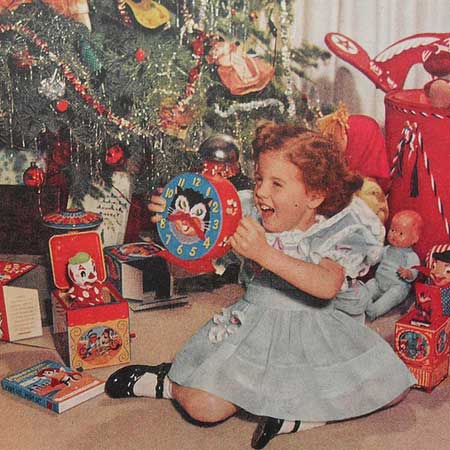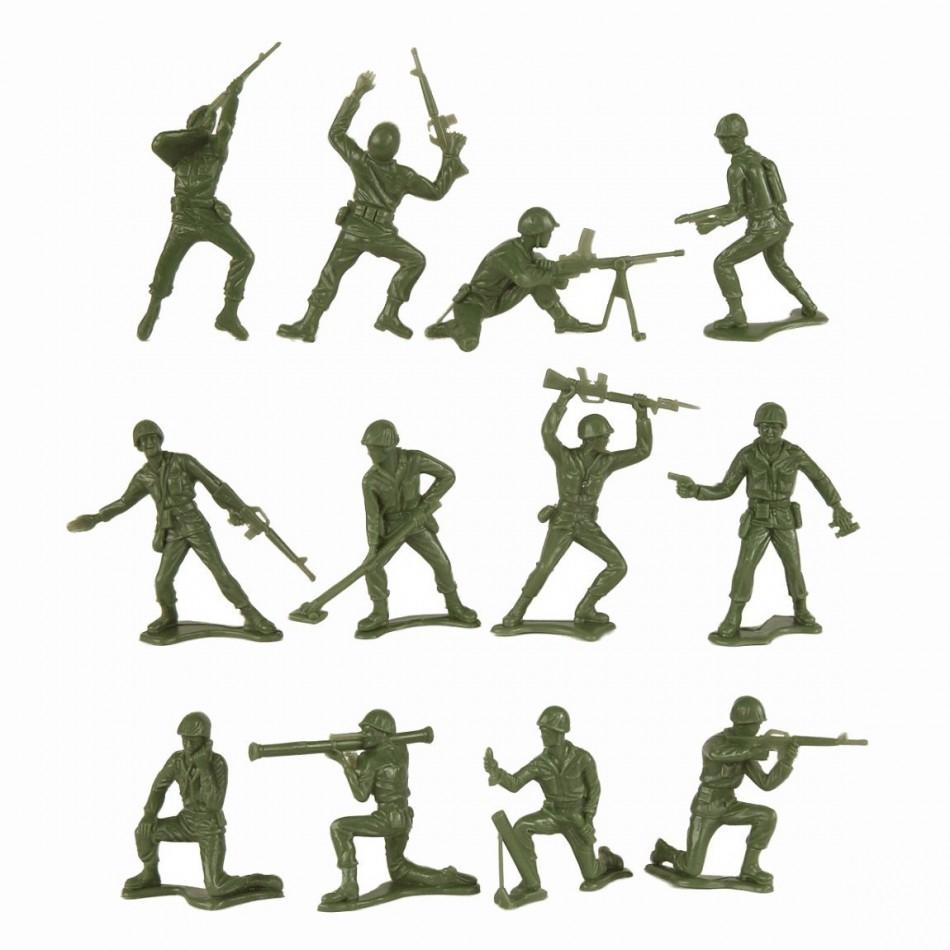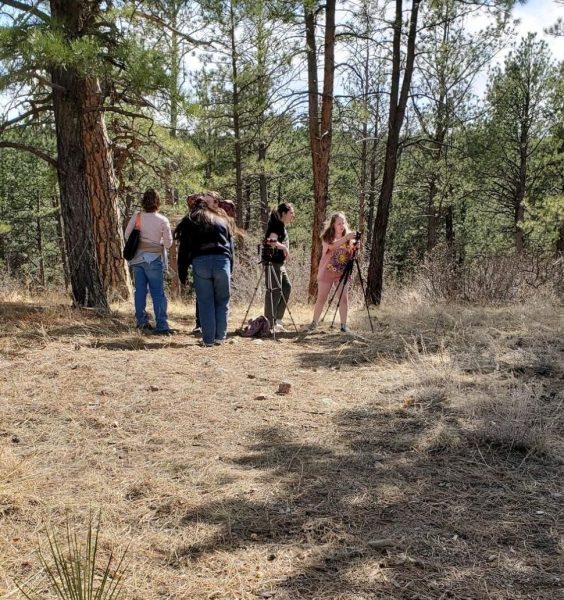A Toy’s Story

Everyone is prepping their Christmas wish lists; have you decided what you want? Nowadays, most people probably have things like the IPhone 6, the newest tablet, or camera on theirs. That’s what a 2014 Christmas wish list might look like, but what did kids ask for in their letters to Santa in years past? Here are some of history’s most influential and greatest toys as well as their origins.
1920’s
Radio Flyer Wagon: Their little red wagons were invented by an Italian, who immigrated to the states and saved up enough of his money to open a factory. By 1923, he was mass producing these babies for three bucks a piece.
Yoyo: Another immensely popular toy manufacturer by a U.S. immigrant. The yoyo got so popular, that only a year after the first Yoyo factory opened it’s doors, it was producing 300,000 yoyos a day, and it achieved even crazier status with yoyo contests started popping up all over the country.
1930’s
Buck Rodgers Rocket Pistol: The first ray gun ever produced and sold, in 1934. It was based off the weapon carried by Buck Rodgers, a very popular comic book character at the time.
Red Ryder BB gun: Yes! The very same BB gun from the movie A Christmas Story (1983). However, long before A Christmas Story ever hit theaters, it was first a comic strip, which was where the original BB gun originated from. The Red Ryder BB gun is still one of the most sold BB guns in the country.
Army Men: These little green men in action started popping up in 1938, however they gained even more popularity in the 50’s thanks to the plastics manufacturing boom. They were even more popular when little Japanese and German Soldiers in different colors were produced. Now little boys all over the country could have a war right in their bedroom; a dream come true for most.
1940’s
Slinky: The slinky got its big break during the Christmas shopping season of 1945, when it creator, Richard James, was allowed to demonstrate his product at a popular department store in Philadelphia. People were amazed, and 400 Slinkys were sold within minutes. Now, 66 years and 250 million Slinkys later, we’re all just as obsessed with them as we ever were.
Legos: In 1949, Danish carpenter Ole Christiansen created a set of interlocking red and white blocks, which he would later patent to create Legos (Lego means play well in Danish). Children were now free to create and build without limits and in nearly endless combinations. Legos are still as popular as ever, and there’s been enough Lego bricks produced, that each person on the planet could have 52 of them.
1950’s
Mr. Potato Head: He may not have the prettiest face, especially when he first hit the toy scene, but something must be said for toys that come from humble beginnings. Inventor George Learner created a set of plug-in facial features (28 in all) to be distributed in cereal boxes. That was back when the features went into actual potatoes. However, soon after Hasbro snatched up the idea, and Mr. Potato head went into mass production. He has come a long way, considering he has now reached super star status thanks to the popular movie Toy Story.
Pogo Stick: Alright, so the first pogo stick was actually invented in the 1800’s, but it only had one vertical handle and so you could say it was discontinued… something about complaints from chin injuries. However, not to fear, the two handled pogo sick came around in the 1950’s and saved the day! It gained even more popularity with the rise of trick stunts and contests. Now you could prove that you had the best pogo skills in the neighborhood.
Barbie: After watching her daughter Barbara play with her paper dolls, the Mattel co-founder, Ruth Handler, created history’s most famous teenage doll. In 1959, she created the grown up fashion doll, named Barbie, after her daughter. Barbie was soon the best-selling fashion doll of all time. Who doesn’t love Barbie, right? Turns out, lots of people. As the 60’s unfolded, Barbie got a bad rap for having an unrealistic body shape. However, recently she seems to be trying to make up for it by inspiring little girls everywhere to be doctors and computer engineers.
1960’s
Ken: In 1961, Ken showed up on the Mattel scene, introduced as Barbie’s boyfriend. The story goes that Barbie and Ken met that year while on the set of a commercial. However, like Barbie, Ken’s body type was also a source of controversy, and studies revealed that his physique really was anatomically impossible. In 2004, Ken made headlines yet again when Mattel announced that he and Barbie had officially broken up, (gasp) but after a series of grand romantic gestures and after a couple billboards popped up asking Barbie to take him back, Mattel happily announced that the golden couple had finally gotten back together in 2011.
G.I. Joe: During the Cold War, a new kind of “doll” emerged on the toy shelves, and this one wasn’t siting still. Marketed to boys, Hasbro’s G.I. Joe was a moving, talking action figure introduced in 1964. Hasbro established the characters as macho war heroes and, more importantly, the anti-ken. Whether G.I. Joe carrying out dangerous missions of war or driving Barbie around in her pink convertible he was always a toy favorite, especially for boys. Along with the toys, Hasbro created a series of comics, a television show, video games and even a movie.
Hot Wheels: Hot Wheels raced onto the toy car scene in 1988 and although the market was already a crowded one, they became a big favorite among both tots and toy collectors. By adding and axle and rotating steering wheels to the traditional toy car, Hot Wheels became the fastest miniature autos available (as well as the flashiest). With so many colors and patterns, kids couldn’t get enough. Mattel also offered one of the most wanted toy accessories of all time: the Hot Wheel race track system. As time went on, Mattel threw in advanced add-ons like springs loaded launchers and battery run supercharge power boosters, to really speed up the race, as well as production.
1970’s
Rubik’s Cube: Hungarian inventor, Erno Rubik, created his first 3-D color coded puzzle cube in the mid 70’s, but it wasn’t until the following decade that Rubik became a household name. After ideal imported the toy to the U.S. in 1980, it skyrocketed in popularity. Millions of kids and adults became obsessed with solving the colorful puzzle. International competitions are held each year for those with freaky fast fingers.
Star Wars Action Figures: After the Star Wars movie was released in 1977, toymakers scrambled to throw together a line of toys. Puzzles and games were released but had little success. It was the first four action figures that would change the galaxy forever. Luke Skywalker, Princes Leia, Chewbacca and R2-D2 were miniaturized and sold to fans by the thousands. Eventually Han Solo, Obi-Wan Kenobi, Darth Vader, C-3PO and others joined the group and were just as popular as the original group of toys.
1980’s
My Little Pony: In 1981, My Pretty Pony came charging out of the stables, but it wasn’t until 1982 that Hasbro changed the name to My Little Pony and they were released into the loving hands of little girls everywhere. Each came with their own name cute name and individualized emblem on its backside. Yes, they were branded, but little girls just thought it was cute.
Transformers: It wasn’t hard to get excited about Transformers as a kid in the 80’s. Alien machines that could become automobiles. Hasbro redesigned a pair of Japanese toys from Takara: The Diaclones and the New Microman. A couple changes here and there and in 1984, they were invading America.
1990’s
Little Tikes Cozy Coupe Car: If you’ve grown up in an average American household in the last 30 years, chances are you’ve learned to drive long before you got your permit. The classic red and yellow car can be pushed or run on foot-to-floor power. It’s been occupying American driveways for years as the toddlers play thing of choice.
Buzz Lightyear: Sorry Woody, but turns out Buzz is still the more popular toy. As the fictional star of Disney Pixar’s 1995 film Toy Story, Buzz Lightyear was a futuristic astronaut, and kids loved him more than Buzz loved gadgets and intergalactic travel. His character was openly inspired by the real life space hero Buzz Aldrin, an Apollo 8 crew member and the second man in history to walk on the moon. Buzz continued to sell out in stores everywhere, even into 2008. That’s when he was recruited by NASA to blast off to the International Space Station to spark interest in aerospace science among kids.
So, if you’re looking to make the ultimate throwback the Christmas season, consider wrapping up one of these babies and putting them under your tree for someone special! You’ve got plenty of great toys to choose from, but whatever you decide, happy gifting and happy holidays!













Cody Maynard • Jan 7, 2015 at 9:27 pm
Love this article! One of the more creative of the issue, well done.